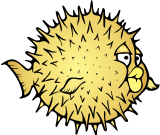Since the #PNG spec is getting some updates, I was thinking... you know what would be sick? Baking classic #lossy compression right into PNG.
I don't mean #JPEG or anything like that. Not even the #LossyPNG scheme I enjoy using where I reduce the number of colors to reduce the entropy. That wouldn't need any changes to the spec.
I'm thinking #Amiga HAM modes! Instant 3:1 (well, 2.4:1) lossy compression with (hopefully) minimal artifacting. That would be SICK!
Makes me want to throw together a Python script or something to read PNG files, apply the HAM "compression," and then see how the output looks. It wouldn't provide much compression savings with regular PNG, it would need a change to the format. But since I never had an Amiga, I'm curious to see how it looks, and how well it might scale to modern image resolutions.
Conceptually, it's not much different than 3:1 horizontal chroma subsampling, but might actually look a lot better.
Quick explainer: instead of having a 24-bit-per-pixel image, you have a 10-bit-per-pixel image, where the first two bits are a mode selector, and the last 8 bits are the actual pixel data. The modes are Hold and Modify{R,G,B}. Modify{R,G,B} modify just the red, green, or blue component of the 24-bit color for that pixel with the 8 bits specified. The modify mode assigns that pixel to be equivalent to the 8-bit value from a pre-defined palette or some pre-defined bit-assignment mode like RRRGGGBB or something. So basically, the horizontal color resolution is divided by 3, but sometimes you get lucky and there's no noticeable loss.



